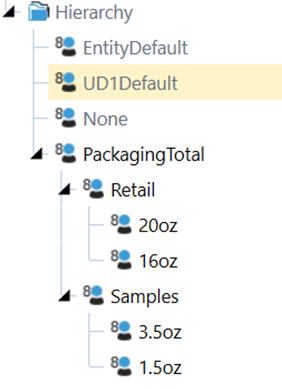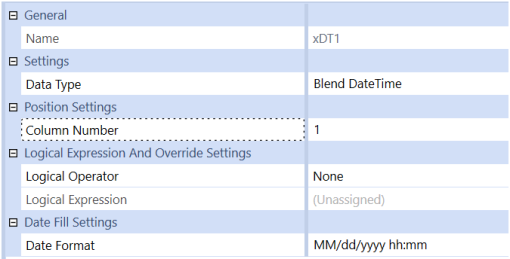Attribute Dimensions
External Cube information is collected using the Attribute Dimensions by enabling the fields on the Cube Integration Settings.
Attribute Value dimensions cannot be assigned static values when used with BI Blend workflows.

Attribute Text Dimension
The Cube Integration settings contains 20 Attribute Text Dimensions available for data integration. By associating the imported members of an Attribute Text Dimension to a UD8 metadata hierarchy, BI Blend can generate the aggregated parent level results for reporting. You can manage Attribute Dimension in the following ways:
-
Attributes as records can be “aggregated” within a Pivot Grid as a reporting tool feature.
-
Aggregations of Attributes can be calculated using BI Blend Derivative Rules.
-
Attributes can be associated with a base member UD8 metadata members and aggregated as a member of a hierarchy.
Associating an Attribute with a UD8 base member requires the Attribute Dimension Record exists as a base member in a UD8 Dimension. Only UD8 can be used to generate Attribute Dimension Members for aggregation. Because the record must be reflected as a dimension member, Aggregation Attributes may not be appropriate for highly transactional, changing, record member.


Attribute Value Dimension
Cube data integration provides 12 Attribute Value dimension members to capture numeric values. These fields capture Time field values for matrix data files.
Blend X Attribute DateTime Dimension
The Attribute DateTime dimension members are unique to BI Blend data sources and cannot be used on non-Blend workflow types. These fields are designed to capture Time based fields and have the extended capability to function as time values in derivative rule functions.
To use the DateTime dimension, the data source must have the integrated dimension set as a Blend DateTime data type. The formatting as mm/dd/yy hh:mm is required to support the time-based derivative rule functions.

Settings include:
-
xBlendDateTime: This is a special column field used by the BI Blend engine to serve derivative calculations for DataSeries/Time value computations.
-
xBlendTime: Twelve time column fields to collect additional time calculations that can support date difference calculations.
Blend X Attribute Text Dimension
Twenty additional text column fields are unique to Blend workflows. These fields are not supported in other non-Blend workflows. Additionally, the Blend X Attribute Text fields do not support extending the records to UD8 for parent level aggregations.
Blend X Attribute Value Dimension
Twenty-four additional value column fields are unique to Blend workflows and are used to capture numeric values. These fields are not supported in other non-Blend workflows. The Attribute Value fields can be used to map time to create a matrix load. The combination of Attribute Value and Blend X Attribute Value fields provides a maximum time-based matrix load of data at 36 periods.


